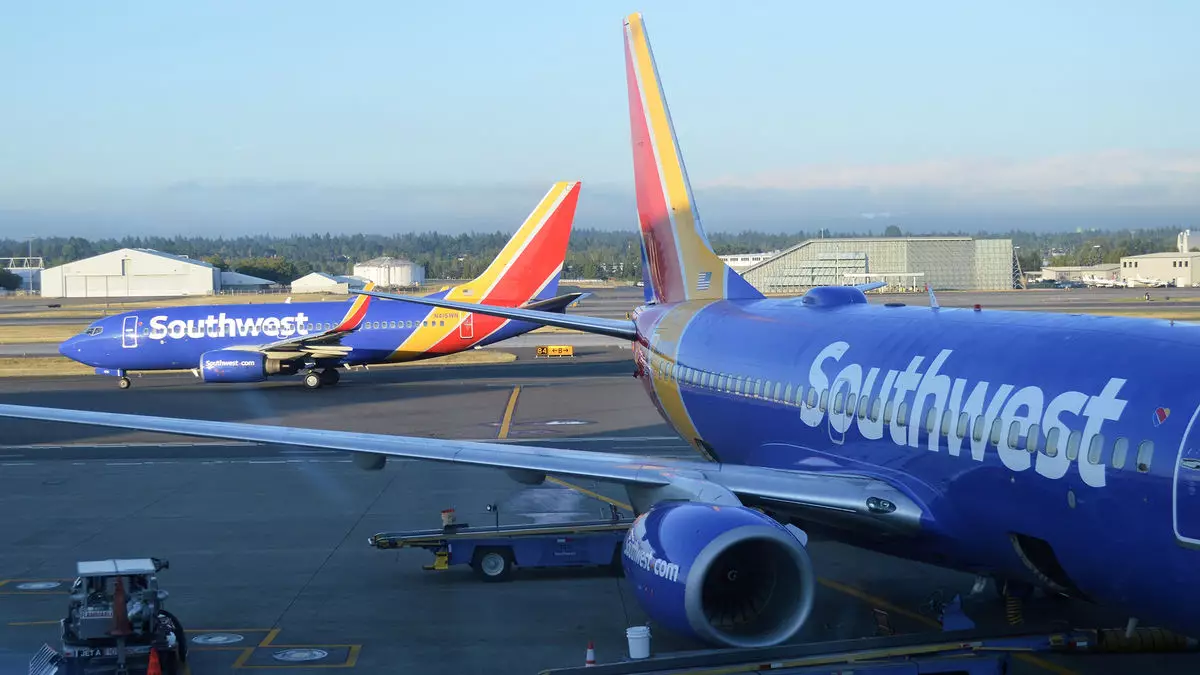In the realm of corporate governance, shareholder activism has become increasingly prominent, particularly in the wake of financial struggles or perceived mismanagement. A recent instance of this dynamic unfolded within Southwest Airlines, as Elliott Investment Management, a significant shareholder with an 11% stake, launched a proxy battle aimed at installing its own nominees to the airline’s board. This push highlighted a broader concern about the operational efficiency and strategic direction of the airline, raising questions about the effectiveness of its leadership in an evolving industry landscape.
Elliott’s Proxy Challenge Withdrawn
After months of tension, Elliott has opted to withdraw its proxy challenge, revealing a newfound accord with Southwest Airlines. Initially, Elliott sought a proxy vote scheduled for December 10, aiming to appoint eight chosen board members and gain majority control. Instead of pursuing this confrontation, both parties negotiated a restructuring of the board that allows Southwest’s existing leadership, albeit in a compromised position, to retain their leadership roles. CEO Bob Jordan, who faced criticism from Elliott, is expected to maintain his position, while Southwest’s chairman, Gary Kelly, will expedite his planned departure from the board, moving it up to November 1.
This decision signals a shift in strategy for both Elliott and Southwest, avoiding a contentious vote that could have further unsettled stakeholders and the market. Instead of an outright takeover of the board, this compromise has led to a reconfiguration that aims for a balance of power, albeit with significant changes in personnel, designed to invigorate the company’s direction.
Effective November 1, the new board structure will include six appointees, five of whom were part of Elliott’s original slate. This strategic move implies an acknowledgment of Elliott’s influence and a recognition of the need for fresh perspectives to navigate the challenging environment facing Southwest. The new members bring diverse experiences from other prominent corporations, such as former Virgin America CEO David Cush and former WestJet CEO Gregg Saretsky, which could potentially lead to innovative operational practices and renewed strategies for growth.
While this reconstitution allows for a blend of continuity and change, it also presents a critical task for the new board members. They must not only adapt to the existing culture but also drive necessary transformation in a market that demands agility and responsiveness. The departure of long-standing members, including Gary Kelly, opens opportunities for the new directors to shape a more competitive outlook for Southwest Airlines.
In response to ongoing criticism regarding its operational efficacy, Southwest has launched initiatives aimed at rejuvenating its business prospects. The airline has projected a goal of achieving $4 billion in additional revenue by 2027, with a strategic focus on elevating its operational margins. Specific plans such as introducing extra-legroom seating, implementing assigned seating, and renewing commitments to in-house vacation offerings illustrate a move toward modernizing the customer experience.
Furthermore, Southwest is exploring partnerships with other airlines, the first being an alliance with Icelandair starting next year. This strategic collaboration could enhance its market reach and drive competitive advantages in international travel segments.
Moreover, operational improvements such as utilizing night flights and reducing aircraft turnaround times underscore a proactive approach to addressing efficiency challenges, aligning with shareholder expectations for enhanced financial performance. Achieving an operating margin of 10% by 2027 will likely depend on the successful execution of these initiatives, making it imperative both for the leadership and the new board to remain committed to this path.
Looking Ahead: Navigating Challenges and Opportunities
Ultimately, the agreement reached between Elliott and Southwest Airlines reflects the dynamic interplay between shareholder activism and corporate governance. As Southwest moves forward, the blended experience of the new board coupled with management continuity will be instrumental. The company stands at a crossroads, where successful navigation of the evolving aviation landscape could either catalyze its recovery or further exacerbate its challenges.
Investors and stakeholders will be watching closely as Southwest implements its strategic initiatives, evaluating whether they can indeed deliver the promised value. The next few years will be critical, and the effectiveness of the newly constituted board will be pivotal in determining Southwest Airlines’ trajectory in an increasingly competitive market.


Leave a Reply